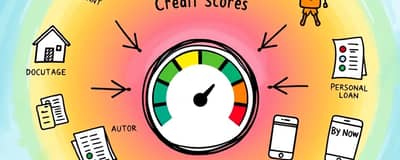When you envision that dream kitchen renovation or the perfect new sofa, the price tag can feel overwhelming. For many, a personal loan provides the necessary boost to turn aspirations into reality. Yet this financial tool comes with both advantages and pitfalls. By exploring its mechanics, benefits, risks, and alternatives, you’ll gain the clarity needed to make an empowered borrowing decision.
Understanding Personal Loans
A personal loan is an installment loan—typically unsecured—offering a lump sum that must be repaid over a fixed term, often 12 to 60 months. Borrowers agree to fixed, predictable monthly payments and a set APR, making budgeting simpler. Unlike mortgages or auto loans, personal loans have no collateral required to secure it, so your home or car remains safe even if financial hardship strikes.
Applications can be processed swiftly, with many lenders offering same-day or next-day funding. Approval hinges on credit score, income, and debt-to-income ratio. Rates vary widely—from as low as 5.99% for excellent credit to upwards of 99.99% for poor credit—so understanding your credit profile is crucial.
Advantages of Personal Loans
- Receive a lump sum upfront to cover appliances, electronics, furniture, or other one-time expenses.
- Potentially lower interest rates than credit cards for borrowers with strong credit histories.
- Improve your credit mix by adding an installment account to your credit profile when payments are on time.
- Fast approval and funding often within days, which can be critical for urgent home repairs or medical bills.
- Enjoy flexibility of use—no restrictions on how you apply the funds.
Potential Drawbacks and Risks
- Interest costs add up: even a competitive APR results in paying more than the loan amount over time.
- Origination fees, late payment charges, or prepayment penalties can inflate borrowing costs.
- Missing a payment can damage credit and incur default fees, affecting future borrowing power.
- High rates for those with poor credit may reach nearly 100% APR, making loans prohibitively expensive.
- The temptation to overborrow can lead to unnecessary debt if you take more than you truly need.
Comparing Personal Loans to Credit Cards
When deciding between a personal loan and a credit card for a significant purchase, it helps to compare key factors side by side.
How to Decide if a Personal Loan Is Right for You
Making the right borrowing choice starts with a clear, methodical approach. Follow these steps to determine if a personal loan aligns with your financial goals:
- Assess your budget: calculate your monthly income, expenses, and how an additional payment fits into your plan.
- Review your credit profile: check your score and report for errors or opportunities to improve terms.
- Compare lenders: look beyond the advertised APR to origination fees, prepayment penalties, and customer service reputation.
- Calculate total cost: use a loan calculator to estimate total repayment, including interest and fees.
- Clarify your purpose: borrow only for worthwhile investments or expenses with clear, tangible benefits.
Smart Borrowing Tips
To maximize benefits and minimize risk, adopt these best practices when taking out a personal loan:
- Set a realistic repayment timeline that fits your cash flow.
- Avoid inflating the loan amount; avoid depleting your savings balance by borrowing only what you truly need.
- Maintain an emergency fund to cover unexpected costs without missing loan payments.
- Automate payments to ensure on-time payments build credit and avoid late fees.
- Read the loan agreement carefully to understand all terms before signing.
Alternative Financing Options
While personal loans are versatile, you might explore other avenues depending on your needs:
Credit cards with 0% introductory APR can finance purchases interest-free for a limited period. Home equity lines of credit or second mortgages often offer lower rates but require collateral. Vendor financing or promotional plans may provide interest-free periods for specific purchases like furniture or appliances. Finally, building up a dedicated savings fund avoids borrowing altogether and preserves your credit profile.
Conclusion
Opting for a personal loan to fund major purchases can be an empowering financial strategy when executed thoughtfully. By weighing the lump sum advantages against interest costs and assessing your personal situation, you’ll be equipped to make a choice that aligns with both your present needs and long-term goals.
Remember, responsible borrowing isn’t just about access to capital—it’s about leveraging tools to build a stronger, more secure financial future. Armed with the right information and a solid repayment plan, you can confidently approach major purchases without sacrificing stability or peace of mind.














